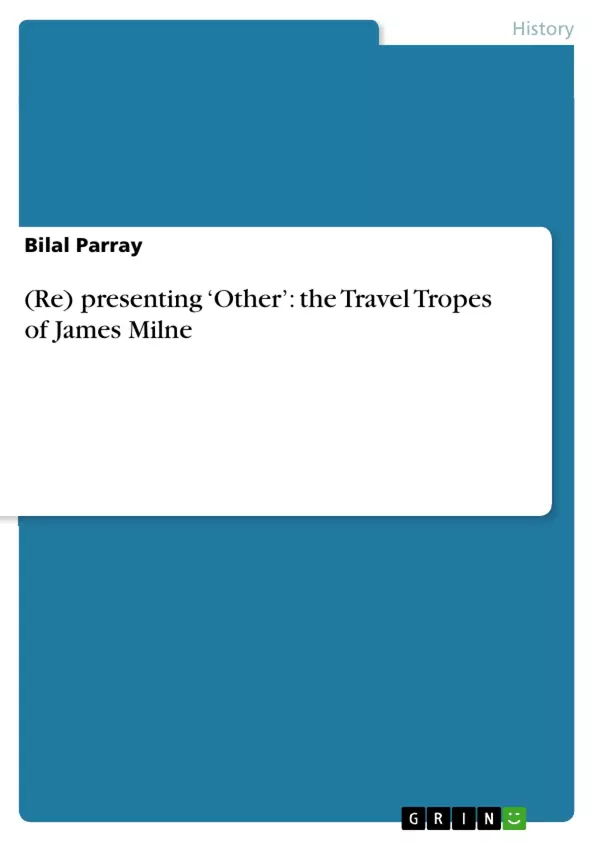Introduction
“There is no foreign land; it is only the traveller that is foreign.” (R. L. Stevenson)
It is a well-established fact that by the turn of the twentieth century the genre of travels had been well established in the sanctum sanctorum of British literature particularly. There has been an immense increase in travel texts especially in 20th century than the preceding era. Focusing over multifarious issues, the travel texts had acquired a more peculiar form and much popularity. With a great vigour and vitality, texts related to travels in the East began to surface as early as the days of Renaissance times. Though more in number and maligned in message, yet travel accounts achieved its zenith only in the subsequent era of imperialism. As a matter of fact, by the high time of European imperialism the travel texts were found all over the Europe, even in catalogued form in different universities of the Europe.
A marvellous text exposing the contours of colonial enterprise, even through mini narratives like Travel litewrature
Table of Contents
- Introduction
- Milne and the Milieu: English Imperialism in the East
- Personal Profile of James Milne
- Travel Tropes of Difference and 'Otherness'
- Eastern Romance and Taj Mahal: an Expression of Muslim Licentiousness Toward Woman
- Milne on Kashmir
- On Behalf of Indian Woman
- Conclusion
Objectives and Key Themes
This work aims to analyze the travel writing of James Milne, examining how his accounts of his travels in the East contributed to and reflected the prevailing imperialist discourse of the time. The study focuses on identifying and analyzing the travel tropes Milne employed to represent the "Other," particularly within the context of Indian culture and society.
- The construction of the "Other" in travel writing
- The role of travel writing in shaping imperial ideology
- The portrayal of Indian culture and society in Milne's work
- Milne's views on gender roles and relationships in the East
- The impact of Milne's writing on Western perceptions of India
Chapter Summaries
The introduction sets the stage for the study by examining the evolution of travel writing and its relationship to imperialism. It highlights the significant increase in travel texts during the 20th century, particularly those focusing on the East. The chapter also explores how travel writing served as a tool to both shape and reflect imperial ideology.
The following chapters delve into Milne's life and work, providing context for his travel writing. Milne's background, including his personal experiences and motivations for traveling, are examined in detail. The chapter on "Travel Tropes of Difference and 'Otherness'" examines the specific tropes Milne utilized to represent the "Other," highlighting the ways in which these tropes contributed to the construction of a biased and often inaccurate view of Eastern cultures.
The chapter on "Eastern Romance and Taj Mahal" analyzes Milne's portrayal of Indian women, focusing on the theme of Muslim "licentiousness" towards women. This analysis reveals how Milne's work reinforced prevalent stereotypes about Indian women and contributed to the perception of Indian culture as morally inferior to Western cultures.
Keywords
This work focuses on the key concepts of travel writing, imperialism, Orientalism, the "Other," representation, gender, and Indian culture. It examines the work of James Milne, a British writer who traveled extensively in the East during the late 19th and early 20th centuries. The study utilizes a critical lens to analyze Milne's work, highlighting the ways in which his writings reflect and contribute to the imperial discourse of the time.
- Quote paper
- Bilal Parray (Author), 2013, (Re) presenting ‘Other’: the Travel Tropes of James Milne, Munich, GRIN Verlag, https://www.hausarbeiten.de/document/212344


